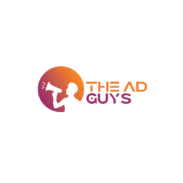In the fast-paced world of digital advertising, businesses invest heavily in online campaigns with the goal of increasing brand awareness, generating leads, and driving sales. However, simply running ads is not enough. To ensure success, advertisers need to focus on maximizing their Return on Investment (ROI)—the key metric that determines whether a campaign is profitable. For beginners, this can be overwhelming, but with the right approach, it becomes easier to achieve measurable success. This article will guide you through everything you need to know to improve your digital advertising ROI.
What is ROI in Digital Advertising?
ROI in digital advertising refers to the financial return generated from an advertising campaign compared to the cost spent on running it. It is calculated using the formula:
ROI = (Net Profit from Ads / Total Ad Spend) x 100
For example, if you spend $500 on an ad campaign and generate $2,000 in sales, your ROI would be 300%. A positive ROI means your campaign is profitable, while a negative ROI suggests inefficiencies that need addressing. Tracking ROI is essential for measuring the effectiveness of your advertising efforts and ensuring that your budget is spent wisely.
What Factors Influence ROI in Digital Advertising?
Several factors impact your ROI, and understanding them is crucial for success. Audience targeting plays a major role—if your ads are shown to the wrong audience, you will struggle to see conversions, no matter how great your creatives are. Ad quality is equally important; poorly designed visuals and weak copy can lead to low engagement and wasted budget.
Budget allocation also affects ROI. If you spend too little, your reach will be limited, but overspending without optimizing conversions can drain resources. Furthermore, choosing the right advertising platform matters. Facebook and Instagram may work well for consumer products, while LinkedIn is ideal for B2B marketing. Lastly, an optimized bidding strategy ensures you are paying the right price for ad placements, maximizing cost efficiency.
How Do You Choose the Right Advertising Platform?
Choosing the right platform depends on your audience, goals, and industry. Facebook and Instagram are excellent for visually-driven brands, allowing businesses to target specific demographics based on interests and behaviors. Google Ads, on the other hand, is great for businesses targeting users who are actively searching for products or services.
For B2B companies, LinkedIn Ads is a valuable tool, allowing businesses to target professionals by industry, job title, and company size. If video content is a major part of your strategy, YouTube and TikTok are ideal platforms to engage younger audiences through creative storytelling.
What Are the Best Practices for Optimizing Ad Targeting?
Effective targeting ensures your ads reach the right people, increasing the likelihood of conversions. Audience segmentation is a key strategy—dividing your audience into groups based on demographics, interests, and behaviors allows you to tailor messaging more effectively. Lookalike audiences help expand your reach by targeting people with similar characteristics to your existing customers.
Retargeting is another powerful strategy. Many users visit a website but leave without taking action. Retargeting allows you to show ads to these users, reminding them of your brand and encouraging them to complete their purchase or sign up for a service.
How Can You Create High-Converting Ad Creatives?
Your ad creative determines how well your campaign performs. A visually striking design grabs attention, while compelling ad copy persuades users to take action. Focus on three key elements: visual appeal, persuasive copy, and a strong call to action (CTA).
High-quality images, engaging animations, and videos help stop the scroll. Your ad copy should clearly communicate the value proposition—why should the user care? Instead of saying, “We sell skincare products,” a stronger approach is, “Get radiant skin with our dermatologist-approved formula!” Finally, a clear CTA like “Shop Now” or “Sign Up Today” directs users on what to do next.
What Budgeting and Bidding Strategies Improve ROI?
Setting a budget is crucial to maximizing ROI. Start with a test budget to identify what works before scaling. Running small test campaigns helps you determine which ads perform best, allowing you to invest more in successful strategies.
Understanding bidding strategies is also key. Cost-Per-Click (CPC) is great for driving traffic, while Cost-Per-Mille (CPM) works well for brand awareness. Cost-Per-Acquisition (CPA) ensures you only pay for actual conversions, making it a smart choice for performance-driven campaigns.
How Do You Track and Measure Ad Performance?
Tracking key metrics allows you to evaluate campaign effectiveness. Click-Through Rate (CTR) indicates how engaging your ad is, while Conversion Rate measures how many users take action after clicking. Return on Ad Spend (ROAS) helps determine if your investment is profitable, while Cost Per Acquisition (CPA) shows how much it costs to acquire a customer.
Tools like Google Analytics, Facebook Ads Manager, and UTM tracking links help you analyze performance and make data-driven adjustments to improve results.
What Common Mistakes Reduce ROI in Digital Advertising?
Many beginners make mistakes that hurt their ROI. Broad targeting leads to wasted impressions and low conversions. Unclear messaging confuses audiences and reduces engagement. Ignoring A/B testing prevents you from optimizing campaigns effectively.
Another common mistake is failing to analyze data. Without tracking performance, you cannot identify what’s working and what needs improvement. Regularly reviewing metrics ensures continuous optimization.
How Can A/B Testing Improve Ad Performance?
A/B testing involves running different versions of an ad to see which performs better. You can test different headlines, images, ad copy, or CTAs. This approach helps refine your ads, ensuring you are using the most effective version to drive results.
What Are Cost-Effective Ways to Scale Ads Without Losing ROI?
Scaling ads effectively requires careful planning. Instead of increasing budgets drastically, gradually expand audience reach while monitoring performance. Introduce new creatives to prevent ad fatigue and diversify across multiple platforms to avoid over-reliance on a single channel.
Conclusion
Maximizing ROI in digital advertising requires a mix of strategic targeting, high-quality creatives, proper budgeting, and continuous optimization. By understanding how different factors influence ad performance and making data-driven decisions, businesses can ensure their advertising spend leads to measurable growth and profitability. For beginners, the key is to start small, test different strategies, and refine campaigns over time to achieve the best possible results. Still feeling overwhelmed? Take a breather and relax while you let The Ad Guys handle all your ad business.







